Fan pipe for the toilet: what is needed + nuances of installation and connection
A sewer pipe is a component of the sewage system, without which it is impossible to equip a bathroom. It is designed to communicate the sewer riser with the atmosphere, prevents the formation of wastewater and the appearance of an unpleasant odor in the bathroom.
A fan toilet pipe installed in the toilet room prevents the occurrence of vacuum in the sewer system and ensures uninterrupted operation of water gates. In our material, we will understand what kind of fan pipes are, and also talk about the rules for their installation.
The content of the article:
Varieties of fan products
Fan pipes are classified by the structural material used in the manufacture of the product.
The classification divides fan pipes into 2 types:
- metal;
- plastic.
The metal (pig-iron) version can be mounted in a sewer system made of similar material. Plastic products can be installed in both plastic and cast-iron piping.
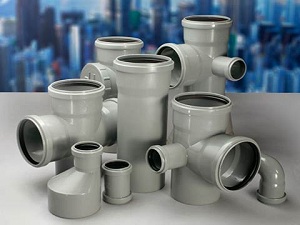
When installing an element from plastic, a flexible sewer fan pipe, a monolithic elbow or a compact adapter is obtained. Cast iron products are not flexible and do not have a variety of shapes.
What is a fan pipe used for?
According to current building regulations, the process of constructing a sewage system of a one-story house can be carried out without a fan pipe. This is due to a small amount of one-time drains.
If the building consists of two or more floors or the housing is equipped with several bathrooms, then in order to ensure stable pressure in the sewage system, a sewer pipe is required.This element connects the riser to the atmosphere, maintaining a stable atmospheric pressure even in the event of a volumetric discharge of water from the toilet tank, which provokes a vacuum in the discharge line.

If several toilet rooms are equipped in the living room, then the situation is radically changing and the fan pipe installed on the toilet is a vital necessity.
This rule applies in the following cases:
- the house has 2 or more levels that are equipped with a sewer system and water supply;
- diameter of the cross section of the sewer riser - 50 mm;
- inside the building there is a swimming pool or water equipment that lowers a significant amount of sewage into the sewer
- the septic tank is close to the house, which can cause a rather unpleasant odor.
In the above cases, rarefaction without a fan pipe can lead to the rapid emptying of siphons under the toilet or sink, which will provide direct contact of the “atmosphere” of the septic tank with the indoor climate.
Thus, the installation of a fan product in the sewer system ensures stable pressure in the outlet pipe and maintains the integrity of water drains in siphons under special waste openings that cut off the unpleasant aroma of septic tanks from the home microclimate.
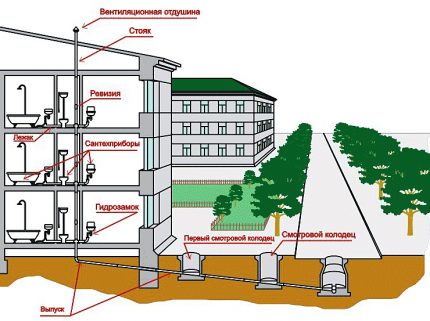
The construction of a sewage and ventilation system with fan pipes is rational in the following cases:
- when installing a sewer riser in a private house with a diameter of 50 mm;
- if there are two or more floors in the house, each of which has bathrooms;
- a private house is equipped with plumbing equipment, for example, a pool generating powerful water drains;
- Autonomous sewage system is located next to the apartment building.
Usually toilet installation performed on a sewer pipe having a typical diameter of 110 mm. The cross section of the drain hole in the tank is 70 mm. As a rule, a pipe with a diameter of 50 mm is connected to the bathroom. It connects to the riser with a siphon cross-section no more than 110 mm.
From this it follows that during the operation of one bathtub or toilet, the inner diameter of the riser will not be completely blocked.
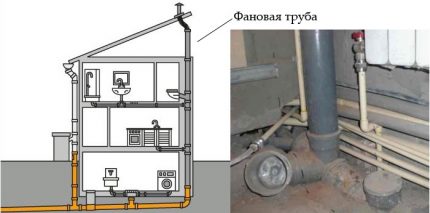
A washbasin, sink or household appliances (dishwasher, washing machine and others) connected to the sewer system are not able to significantly change the volume of a one-time drain.
One-time drains of the above devices are insignificant, so they can not radically affect the situation. In these cases, the fan pipe is mounted to the toilet at the request of the property owner.
Rules and features of the installation
Fan pipes are made of sewer pipes of the required diameter. They serve as a continuation of the riser in the bathroom and end up entering into a special channel equipped for venting the sewer system.

Connecting a fan system allows you to successfully solve the urgent problem of unpleasant, pungent odors in the toilet with the full operation of the sewer and ventilation systems. This is due to the small size of siphons in modern plumbing fixtures, due to which they may form an insufficient supply of water (water seal).
If the shower drain or plumbing fixture is not used for more than 2 days, this can lead to the drying of the water seal, which will provoke unhindered air from the sewer into the bathroom. At the same time, the fan pipe not only effectively draws in air, but also ventilates the sewage pipeline.
When warm air rises along the riser, a rarefaction occurs, due to which it partially enters the atmosphere through a previously dried siphon.
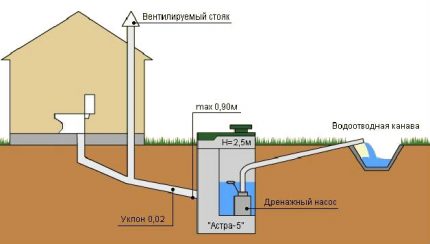
According to building codes, a fan pipe must be carried out in a warm room, if necessary, the product must be insulated. If it freezes, the vapor will not dissipate quickly and efficiently. For this reason, after a year of use, the upper part of the element is covered with a greenish coating.
When installing a fan pipe, two basic rules must be observed:
- The diameter of the product must be larger than the diameter of the riser on which the sewer pipe is mounted (regardless of the material used in the manufacture of the pipe).
- It should end at 40-50 cm from the edge of the roof ridge, so unpleasant odors will quickly be removed to the atmosphere.
The system output must be outside the residential area. More precisely, the fan pipe for the plumbing device (toilet) should go beyond the bathroom and stretch through the attic to the roof of the building. Otherwise, fetid odors from your septic tank penetrate the living area.
What is required to install a toilet?
The scheme for connecting a plumbing device to a common sewer system involves connecting the toilet to the pipeline using pipes, bends, corrugated or eccentric cuffs.
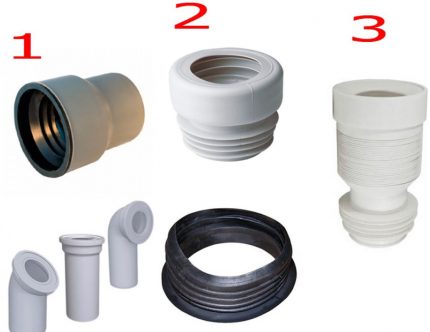
It should be borne in mind that the installation of any toilet model using reliable and durable cuffs has a number of requirements:
- categorically it is impossible to cut pipes and change their geometric shape;
- corrugated cuffs can be freely extended in length, as well as bent at the required angle;
- the eccentric cuffs must be rotated about the axis, this allows you to compensate for the deviation from the alignment of the connected plastic pipes.
Performing a pipe connection using corrugated cuff has its advantages. This is a unique opportunity to connect the toilet to a common sewer system in hard-to-reach places. In these cases, the sewage system is equipped with various receiving sockets.
Riser Installation Instructions
When replacing a pipeline in a country house or apartment, it is first necessary to dismantle the sewer system.Cast iron products are considered obsolete, so they must be replaced with plastic analogues, observing certain rules.
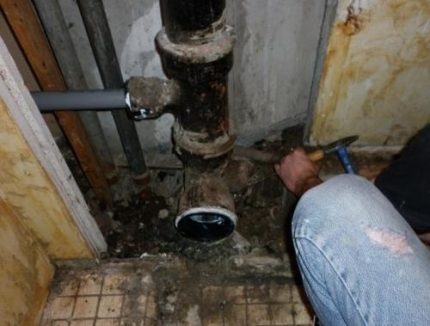
Dismantling is carried out by disconnecting the sewer riser, followed by disconnecting all structural elements. Before replacing, it is recommended to consult a specialist that will help you find out if replacing an element of a cast-iron riser with a plastic will cause unpleasant consequences, expressed in a decrease in the strength and reliability of the sewer system.
A new pipe is mounted from a lower stiffness point located in the area of the main riser. Installation in a country house begins with the site on which the foundation of the building is located. In the supporting structures, it is required to drill holes, after which a pipe with a diameter of 110 mm is installed and fixed with clamps. After installing the plumbing fixture, a special tap is brought to it.
When installing the riser, it is necessary to use exclusively metal clamps, which will ensure the reliability of the structure and will reduce deviations from the marking lines that arise during the assembly process.
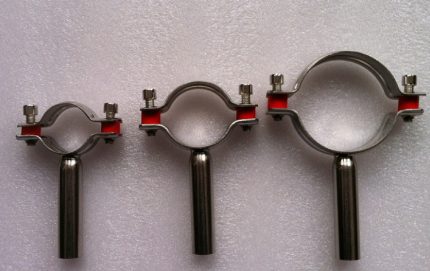
The stud on the metal clamp is characterized by a functional screw structure, which allows you to accurately adjust the connected elements.
Thermal insulation and sound insulation of pipes
When installing plastic elements, one should not forget about important measures of system protection - sound insulation and pipe insulation. Thermal insulation is carried out using a tubular cover of penoizol, which is worn on the outside.
To arrange soundproofing of the system, the contact point of the floor slab and pipe is filled with polyurethane foam or other sealed material.
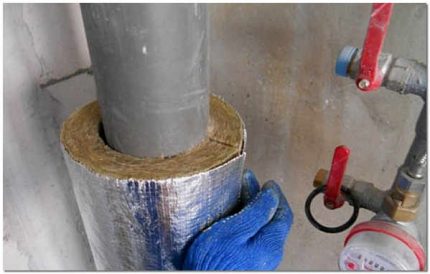
Soundproofing the fan pipe can be done using a mineral slab or special foam. Often used mounting foam, which is easier to use, however, in the case of dismantling the structure, it will not allow to assemble it back.
Check valve for fan systems
During installation, a fan pipe is introduced into a previously prepared ventilation duct. If the project provides for the minimum number of ventilation risers, then the tap for the toilet is displayed horizontally against the wall, without affecting the interior of the bathroom.
Particular attention should be paid to an important element of the system - a non-return valve, whose functions include:
- preventing the return of waste products back to the toilet;
- the valve does not allow rodents to enter the sewage system;
- correction of the situation in case of incorrect slope of the pipe;
- an obstacle to the return of solids to the toilet.
If the check valve is installed internally, the pipe must first be cleaned and thoroughly degreased. Then a special insert is installed - it must be purchased in advance, since it is not included in the package with a check valve.
When installing the valve, it must be taken into account that its location must be counter to the return flow, and the petals are bent towards the plumbing element.
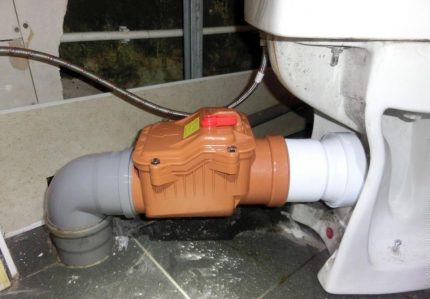
When mounting the valve, do not use lubricants or silicone products, even if they are designed for sewer systems.The installation process must be carried out exclusively dry.
If the sewer pipe has a typical diameter of 110 mm, then valve installation involves the use of a special adapter. If you plan to connect to a gray pipe with a sawn-off socket, the valve is installed in the pipe.
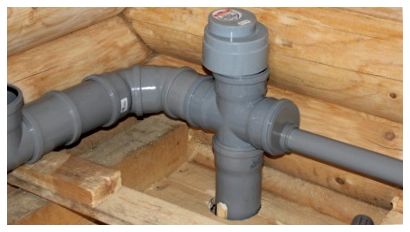
When draining water in the toilet, the valve cover opens, after which it automatically closes with a spring made of stainless steel. Due to this design, the lid does not open outside with fecal matter, which eliminates their return to the toilet.
The tightness of the connection of the valve to the sewer pipes is achieved using rubber rings. The valve has a long service life (more than 50 years).
Connecting a toilet without corrugation
If the owner made the decision not to use the corrugation when connecting the plumbing device, it is necessary to adhere to the basic rules: you must use an adapter or pipe, the toilet is connected to the adapter in different ways, depending on the release of the plumbing device.
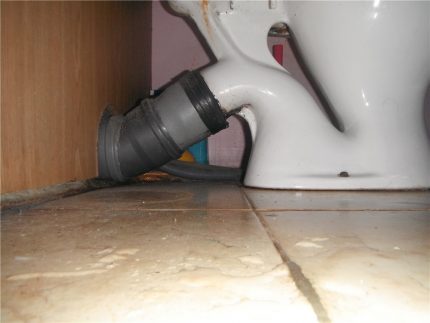
Depending on the internal design, the toilets are classified into 3 types, which also differ in the features of installation and connection:
- Plumbing equipment with oblique release. Installation of a plumbing device is carried out in a pipe at an angle of 90.
- Plumbing equipment with vertical outlet. Plumbing installation is carried out on the floor.
- Plumbing equipment with horizontal outlet. Installation of products is carried out in a sewer pipe horizontally or with a slight slope.
If the release of plumbing and the entrance of the sewer network do not match, then you need to install adapter pipes bent at the right angle or choose the optimal toilet model.
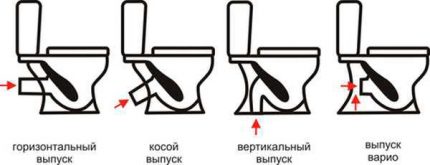
Before choosing the optimal design, it is worth considering the features of installing each type of sanitary equipment.
Installation of a toilet with a vertical outlet
Similar models of plumbing are widely used in Europe. This is due to the fact that a vertical outlet pipe and a siphon located in the plumbing bowl are mounted in the sanitary equipment. Convenient design allows you to install the product at any distance relative to the wall.
Installation of plumbing with a vertical outlet is relatively simple:
- marking is carried out on the floor of the toilet room;
- for marking, a screw flange is installed, equipped with a special clamp;
- the sewer pipe is mounted in a round hole located in the center of the flange;
- The toilet is mounted on the previously installed flange, then it is turned until the equipment is completely fixed.
The exhaust pipe is equipped with a sealing ring. Due to the presence of this element, the pipe is automatically tightly pressed against the sewer pipe. For more information on connecting a sanitary product with a vertical outlet, read Further.
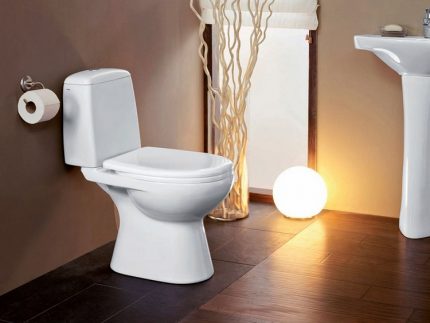
Installation of plumbing with horizontal outlet
Connecting toilet models with direct (horizontal to the floor) outlet is relevant for conditions in our country.This is due to the fact that the bathroom is tied to a certain wall of the toilet room due to the specific wiring of sewage pipes in typical houses in Russia.
Since the release in these models is directed back, it is located in the back of the product. The outlet pipe is attached to the pipe using a sealing collar.

During installation, special attention should be paid to securing the sanitary equipment to the bathroom floor. The legs of the plumbing bowl with horizontal outlet have specially made holes designed to secure the toilet to the floor.
Connecting plumbing equipment with direct outlet ends with the installation process, during which screws and dowels are used. Fastening must be done carefully, since in the case of a strong "pulling" of the screw, you can damage the integrity of the surface of the sanitary ware.
Installation of plumbing with oblique outlet
The installation and connection of plumbing with oblique release is carried out in stages:
- Before connecting the plumbing to the sewer system, the outlet of the device with the grooves located inside should be lubricated with a mixture of meerkat with drying oil (or sealant).
- From above it is necessary to carefully wind the resin strand. The tip of the process 0.5 cm long should remain free, since the ends of the strands can get into the hole and cause clogging.
- The wrapped resin strand is greased with red wine.
Then the toilet is installed, during which the outlet process is fixed in the socket of the sewer pipe.

Installation of sanitary equipment with oblique release - A simpler process due to the absence of a fixed point for connection at a certain place. If during the arrangement of the sewer system the outlet bell is inaccurate, this is not considered a problem.
Features repair fan systems
Installation of the internal sewage system is carried out “into the socket”. This greatly facilitates the installation and dismantling of all pipeline elements.
Repair work is necessary for physical damage to a fan or sewer pipe. Due to the excellent stiffness indicator (pipe resistance to bending - 80 MPa) and the long life of the plastic (up to 60 years) there is a low probability of physical damage to the pipes.
When repairing fan pipes, the master must consider the following rules:
- the end of the fan pipe is positioned so as to ensure effective dissipation of the unpleasant odor;
- the diameter of the pipe must be the same or larger than the riser on which the installation is performed;
- lay the pipe in warm rooms, and finish the installation in the cold zone, since the temperature difference provokes a pressure drop in different parts of the pipe.
Repair work involves the connection of a fan pipe to a sewer riser. At the same time, installation of vacuum valves - rubber seals equipped with springs - is performed on other risers.
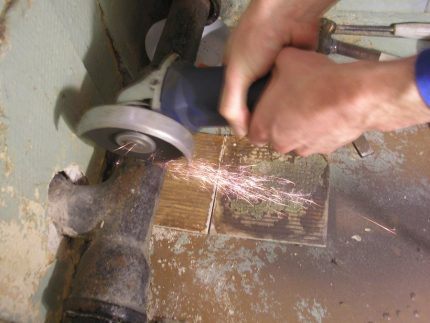
In the process, the sewer system creates a vacuum in the valve, as a result of which it opens and draws in air from the room. After stabilizing the pressure in the riser, a special spring automatically closes the check valve, preventing the unpleasant odor from entering the atmosphere.
Conclusions and useful video on the topic
The videos are useful for a general understanding of the operation of the sewer system in the home.
The role of the fan pipe in the sewer system and the principle of operation of vacuum valves:
Replacing a cast iron toilet pipe with a plastic one:
How to replace the tee yourself:
We figured out what a fan pipe is and what is its role in the sewer and ventilation system. You can do it yourself, but if you have difficulties with installation or calculations, it is better to contact specialists.
If after studying the material you have questions or you have valuable information on the installation of fan pipes, please share it with our readers. Leave your comments, ask questions, share experiences.

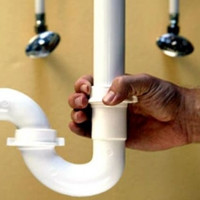 Water lock for sewerage: classification of water locks and the rules for its installation
Water lock for sewerage: classification of water locks and the rules for its installation  Do-it-yourself sewerage in an apartment: rules for internal wiring and installation
Do-it-yourself sewerage in an apartment: rules for internal wiring and installation 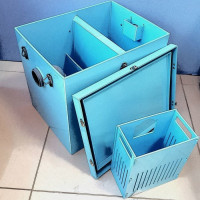 Grease trap for washing: operating principle, types of structures and features of their installation
Grease trap for washing: operating principle, types of structures and features of their installation  How to mount a fan pipe: step-by-step instruction and analysis of common mistakes
How to mount a fan pipe: step-by-step instruction and analysis of common mistakes  Cast iron pipes for outdoor sewage: types, features of application and installation
Cast iron pipes for outdoor sewage: types, features of application and installation 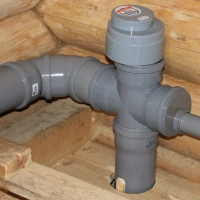 Internal sewerage: device options in an apartment and a private house
Internal sewerage: device options in an apartment and a private house  How much does it cost to connect gas to a private house: the price of organizing gas supply
How much does it cost to connect gas to a private house: the price of organizing gas supply  The best washing machines with dryer: model rating and customer tips
The best washing machines with dryer: model rating and customer tips  What is the color temperature of light and the nuances of choosing the temperature of the lamps to suit your needs
What is the color temperature of light and the nuances of choosing the temperature of the lamps to suit your needs  Replacement of a geyser in an apartment: replacement paperwork + basic norms and requirements
Replacement of a geyser in an apartment: replacement paperwork + basic norms and requirements
When installing toilets, it is customary, for aesthetic reasons, to try to hide all connections and communications in the walls and floor. At the same time, they often do not take into account that the difficulty of access to pipes, the lack of daily monitoring of their condition can cause a real communal disaster. It happened to be a witness that a laying fault in a fifty-ruble flexible wiring that they managed to hide in the wall sheathing led to the landlord paying for repairs in 2 apartments below.
For some time now, an unpleasant sewer odor began to appear periodically in the bathroom. The toilet has already washed, probably about ten times, it has been flooded with cleaning products - it temporarily helps, then again ... I don’t understand whether it smells from the ventilation from neighbors or from the toilet. They suggested that this could be due to an improperly made fan pipe. I don’t want to call the plumber yet (I suppose that he will say “everything needs to be redone. I’m not yet mentally ready for this), I want to try to understand on my own what the problem is. Are there any external signs that something is wrong with the pipe?
First of all, I want to say that it is better to call plumbing, do not give a lot of money for diagnostics and calling. But he will know the exact cause of the unpleasant smell in the toilet. And there you yourself will decide to fix it yourself or still involve a specialist in the decision.
Let's walk through the main reasons that can cause an unpleasant odor in the toilet:
- The water level in the siphon has shifted, due to which sewer gases pass over the water plug;
- The corrugated pipe is stretched, due to the sagging of the pipe, an unpleasant odor can penetrate;
- Incorrect bend of the corrugation, the bend of the corrugation may have changed (touched something), which provoked the appearance of an unpleasant odor;
- Siphon clogging, if you have combined with \ y, then this may be one of the reasons for the unpleasant smell.
I named only the main problems that you can detect yourself. But it is better to call a specialist, depending on the cause of the problem, the repair will cost you from 10 to 30 dollars.